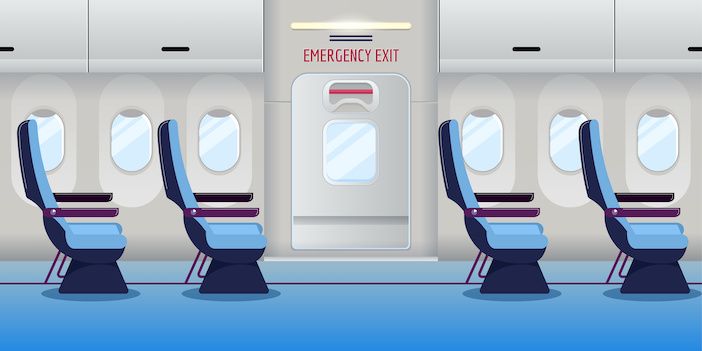Safety is king in the airline industry. While very few deaths occur each year from aircraft incidents, more than one million deaths occur each year in car crashes; however, aircraft crashes are always front-page news. Over the years, fatalities and injuries related to air travel have steadily decreased. That is particularly good news considering the billions of people who travel by commercial aviation each year. What’s more, travel demand will probably increase drastically this year, still driven by the end of pandemic travel restrictions.
But amid all this increased travel demand, are air travellers today safer than they have been in the past? Will the aviation industry be able to keep up with the increasing demand without compromising on passenger safety? Is the avionics industry developing even more dependable planes and better regulations for safer travel in the future?
How safe is flying today?
You may have heard that flying is safer than travelling in a car by a wide margin, and that is absolutely true. Flying is safer than ever, and the statistics bear that out. Overall, you have a one in 5,000 chance of dying in a car accident and only a one in 7.9 million chance of dying in a plane crash. What’s more, these numbers continue to improve for aviation: in 2021, the airplane industry saw a nearly 10% drop in accidents compared to 2020, along with a 66% decrease in fatalities resulting from plane accidents.
Of course, this wasn’t always the case. Let’s take a quick look at the history of why over a third of people experience at least some anxiety when flying. Back in the 1960s and early 1970s, there was one fatality for every 350,000 boardings. But, by the late ‘70s and early ‘80s, the fatality risk had halved. In the next decade, the number decreased significantly again. In all, over the last 30 years, the chances of being involved in a fatal air accident have gone from one in 350,000, to one in roughly eight million globally.
Unfortunately, many people are still afraid to fly. After all, statistics are one thing, but the news stories and media coverage about fatal plane crashes are another. For example, in 2019, two Boeing 737 MAXs crashed due to design flaws, killing 346 people. The B737 planes had to be grounded, and to this day, there are still news stories and concerns regarding the Boeing 737’s airworthiness. Flying may be relatively safe, but it certainly can and should become safer still.
What has changed to make flying safer?
Modern technology has changed many aspects of how planes function, particularly regarding reliability and safety. For example, fire suppression systems are better than ever before. Electrical systems have added redundancies in the form of pneumatic backup functions in case something shorts out in the fire suppression systems.
The overall design of planes has also improved in terms of weather tolerance. While you might worry about turbulence – considering that it may have gotten worse over the years – the fact is that turbulence has only caused four crashes since 1980, though the most recent crash was just last year. Overall, the technology is advancing too quickly for turbulence to keep up. With new and improved designs that are built to resist the worst levels of turbulence and weather, avionics manufacturers have shown there is little reason to be concerned about turbulence on your next flight.
There are also more checks and balances than ever to ensure the safe takeoff and landing of each flight. Moreover, incredibly strict safety regulations like DO-178C are constantly evolving. DO-178C covers software safety and quality standards, and has been updated three times since it was first published in 1960. As the needs of the avionics industry change, so will DO-178C and similar standards from EASA and the FAA.
The future of safe flight
Changes are coming to the aviation industry as technology continues to improve. New developments such as electric planes and AI come with their own set of safety challenges. How are airlines going to continue to keep passengers safe and even increase safety in the future?
For electric planes, safety can be complex. The power sources for electric aircraft tend to use lithium-ion batteries. The problem is that these batteries can potentially overheat and catch fire or explode. In order to keep passengers safe, avionics developers have to consider additional alerting mechanisms to detect any overheating, as well as more redundancies for electrical systems.

On the AI side, things get even more complicated. AI has already shown considerable value in helping planes avoid collisions, as well as in optimising flight plans and predictive maintenance. On the other hand, the idea of an AI pilot has yet to come to fruition. After all, few people are totally thrilled about the idea of trusting their lives to a machine one day in lieu of a human pilot.
AI comes with certain risks, which is why we’re still at least a decade away from fully autonomous passenger flights. Still, with recent advances in AI technology, who knows how much work aviation systems will be able to do autonomously in the future? All we can be sure of is that safety will still come first, just as it always has.
Ultimately, you’re pretty safe if you choose to board a plane tomorrow. And if the last several decades have taught us anything, it’s that you’ll be even safer boarding a plane a few years from now.
Vance Hilderman is an aviation expert, author, and CEO of AFuzion





